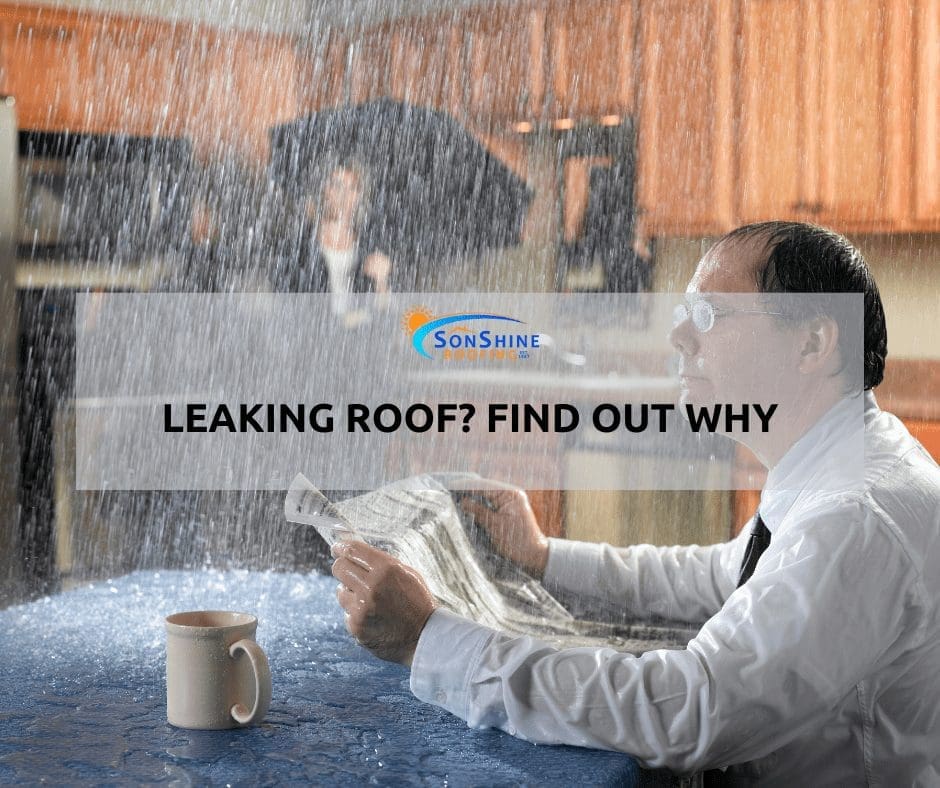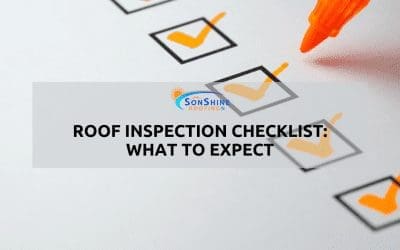A shingle roof will last you as long as 20 years. But your roof’s lifespan depends on the weather conditions in your area and how you maintain your roof.
Homeowners can experience many common roofing issues; this includes a leaking roof.
A leaking roof starts out as an inconvenience. But without proper maintenance, those leaks can lead to some serious damage. If you find a leak, a timely repair is key. But why is this so vital? And how can you identify a leaking roof?
Here’s how to spot leaking roof damage and some of the most common causes.
Leaking Roof Causes
Did you know there are many types of roof leaks? These all show different signs and have their own causes. Here are some of the most common causes of a roof leak.
Attic Vent Leaks
Attic vents are important so air can circulate from underside your roof. This also prevents excess moisture that can cause wood rot, mold, and overall roof deterioration.
Even though the attic vent helps prevent moisture, sometimes this protection is no match for a heavy raining day. The excess water can slip from the vents into your home.
In addition, attic vents can get damaged or wear down. All it takes is a light drizzle for your roof to start leaking.
Leaking Vent Pipe
Pipes, such as plumbing pipes or exhaust vents, penetrate your roof. These pipes are sealed with different types of sealants.
Over time, this sealant can wear down from too much sun exposure. This risks a crack in the sealant, allowing a perfect place for water to enter.
Damaged or Missing Shingles
Shingles can fly off your roof or be damaged during a major storm. This can lead the way to several issues, including water damage. The missing or cracked shingles offer an entryway for water.
Keep in mind, your shingles don’t have to be gone or completely damaged to invite a leak. Even the smallest gaps or dimples in your roof can cause water damage. Unfortunately, these smaller damages are harder to spot.
Chimney Leaks
Chimney leaks are one of the most difficult to spot. Since the water leaks inside of your chimney, these leaks are almost impossible to notice inside of your home.
You’ll have to look for moisture build up around the chimney’s exterior to spot the damage.
Chimney leaks form when the sealant surrounding flashing develops cracks. Heavy rain can bring water into these cracks, ruining the walls and overall structure of the chimney.
Roof Valley Leaks
Roof valleys carry lots of water. These valleys are constructed so they won’t damage while holding excess rainwater. Roof valleys are also constructed to hold snow for homes up north.
Unfortunately, issues can occur. Poor construction can result in roof valley leaks. In addition, letting debris build up in the valleys will also cause a leak. It is important to keep them cleaned out to minimize potential leaks.
Clogged Gutters
Clogged gutters can cause a myriad of issues. One of the biggest issues includes roof leaks along the edges.
Gutters are designed to transport water away from the home. This protects your water from any type of structural damage caused by moisture. However, gutters can clog up.
This causes the water and debris to pool inside the gutters, leaching underneath the roof and leaking into your home.
Skylight Leaks
A skylight is a design feature that opens up a section of the roof to let sunlight pour in. This section is sealed to offer daylight while protecting your home from environmental concerns.
While skylights are a great way to save energy, they, unfortunately, bring the risk of leaking.
That’s because rainwater can hit the frame of your skylight, accumulating moisture. This is even worse if your frame isn’t tight; the water can leak inside your home.
Loose Nail Leaks
Occasionally, the nails on your roof can get loose. This can occur with age, from a storm or poor workmanship. These loose nails can expose the shingles below. When it rains, the water can enter your home from the loose nail, causing a leak.
Ice Dam Leak
An ice dam is a layer of ice and snow along the lower edge of your roof. This prevents melting snow from accessing past the dam. This can cause excess moisture to leak from the roof.
Dormer Roof Leaks
Over time, a dormer on your roof can cause multiple issues. This includes broken trim, rotting, and damaged siding. Any of these damages can cause water to enter inside of the dormer.
Signs Your Roof Is Leaking
Spotting a leaking roof is not always obvious. Since there are many types of roof leaks, there are many ways a leak can manifest itself.
Spots on Your Ceiling
This is the most common sign. If you see brown- or yellow-colored spots on your ceiling, this is a sign you have a roof leak and the moisture is accumulating. These spots can vary from very small to very large.
Dripping Water
This is another common sign. Dripping water from the ceiling is always a bad sign. If you can’t notice this sign in your home, check your attic.
Moist Drywall
If your drywall is moist or spongey, this means the moisture is starting to damage your home’s structure. This is even more dangerous if the damage is anywhere near electrical outlets.
Interior Paint Peeling or Bubbling
This typically happens during heavy rains. It’s a sign your home’s structure is accumulating moisture and is getting worse each time it rains.
Do You Need a Roof Inspection in Sarasota?
Is your roof leaking? All Florida residents know the effects of Florida rain and hurricane season. If you spot any sign of a roof leak, don’t wait on repairs. Doing so can only increase the damage.
But fixing your roof DIY can be tricky. You need a professional to come out and inspect your roof.
Sonshine Roofing has been serving Sarasota-based clients since 1987. We offer roof inspection, repair, and replacement services. Contact us to schedule an appointment.




0 Comments